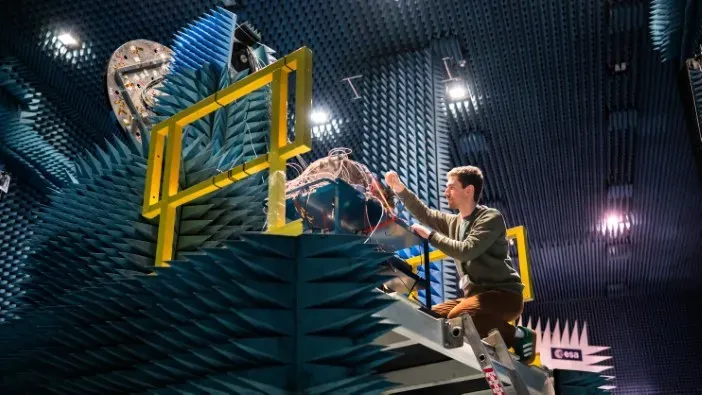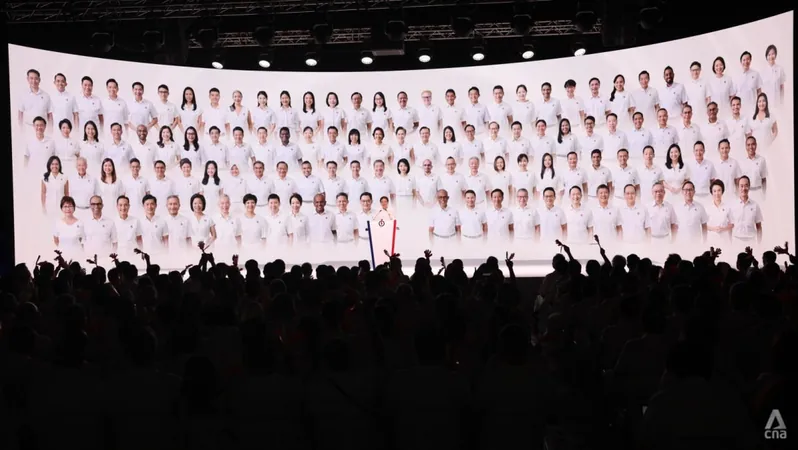
Revolutionary Antenna Technology Set to Transform Space Communication
2025-04-14
Author: Li
ESA's Groundbreaking Antenna Concept Tested
Engineers from the European Space Agency (ESA) have made significant strides in antenna technology that could change how we communicate in space. They recently tested an innovative antenna capable of focusing multiple signal beams in various directions, a game-changer that minimizes the required components.
Cutting-Edge Beamforming Technology
Developed, patented, and prototyped at ESA's Microwave Laboratory, this technology utilizes radio beamforming to efficiently direct signals without the need for traditional high-power, mechanically steerable antennas. Instead, it employs an array of low-power antennas that work in unison, significantly enhancing flexibility and performance.
How It Works: Symmetry and Simplification
Hugo Debergé, a microwave engineer at ESA, explained how this new approach utilizes the natural geometrical symmetry of antennas. By adjusting the phase and amplitude of each antenna element, engineers can steer signals electronically, eliminating the need for physical adjustments. This method simplifies calculations and allows for more efficient signal processing.
In essence, antennas can be grouped based on their symmetry—elements at strategic positions collaborate to achieve the desired output, akin to pairs on a clock face working together rather than operating independently.
Reducing Complexity for Higher Efficiency
Building on discoveries from the past decade, the new technology also significantly reduces the complexity of electrical circuits, cutting down on the number of components needed while maintaining performance. This innovation not only lessens the system's weight but also minimizes power consumption, making it a smart solution for both space and terrestrial applications.
Testing in Anechoic Chambers
Antennas play a crucial role in spacecraft, responsible for transmitting communication and navigation signals crucial for missions. To truly validate this prototype, ESA engineers conduct tests in anechoic chambers, which simulate the harsh conditions of space.
The Hybrid European Radio Frequency and Antenna Test Zone (HERTZ) at the European Space Research and Technology Centre (ESTEC) in the Netherlands is one such facility where these significant tests take place.
A Bright Future Ahead
Vaclav Valenta, another microwave engineer and co-inventor of the concept, expressed optimism about the future, stating, "This patented beamforming concept and its experimental results are available to industries in ESA member states at no cost. This presents an incredible opportunity to integrate this technology into compact microchips for broader applications."
With growing interest from industry partners, ESA plans to kick off a dedicated research and development program to enhance this technology's readiness for real-world applications. This initiative will be part of the Open Space Innovation Platform (OSIP) designed to commercialize ESA's groundbreaking inventions.
ESA: Pioneering Space Solutions
ESA continues to lead in engineering capabilities, from design and simulation to prototyping and thorough testing, all under one roof. This integrated approach enables rapid development and demonstration of new concepts, opening doors for further industrial R&D collaboration.

 Brasil (PT)
Brasil (PT)
 Canada (EN)
Canada (EN)
 Chile (ES)
Chile (ES)
 Česko (CS)
Česko (CS)
 대한민국 (KO)
대한민국 (KO)
 España (ES)
España (ES)
 France (FR)
France (FR)
 Hong Kong (EN)
Hong Kong (EN)
 Italia (IT)
Italia (IT)
 日本 (JA)
日本 (JA)
 Magyarország (HU)
Magyarország (HU)
 Norge (NO)
Norge (NO)
 Polska (PL)
Polska (PL)
 Schweiz (DE)
Schweiz (DE)
 Singapore (EN)
Singapore (EN)
 Sverige (SV)
Sverige (SV)
 Suomi (FI)
Suomi (FI)
 Türkiye (TR)
Türkiye (TR)
 الإمارات العربية المتحدة (AR)
الإمارات العربية المتحدة (AR)